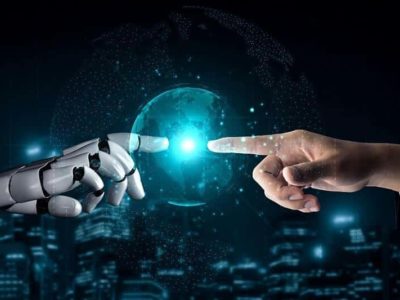I recently posted something explaining the varied applications of machine learning in the workplace. But today, I decided to bring it home by showing you how you have already benefited from machine learning.
RELATED: What is the point of creating artificial intelligence?
In the digital age, smartphones have become an integral part of our daily lives. From communication to entertainment, navigation to productivity, we rely on mobile applications for nearly every aspect of our routine. What many people might not realize is that machine learning, a subset of artificial intelligence, plays a pivotal role in the development of most mobile apps.
As we have noted before, Machine learning is a field of artificial intelligence that focuses on creating algorithms and models that enable computers to learn and make predictions or decisions based on data.
Now, let me show you how machine learning has been shaping your user experience across some mobile applications you use every day.
Personalized Recommendations
Apps like Netflix, Spotify, and Amazon use machine learning to analyze past interactions, preferences, and behaviors to suggest content or products you will likely enjoy. These recommendations are what keep you engaged and coming back for more. For instance, if you have a history of searching and watching romantic movies, crime thrillers, or reality shows, the app will make recommendations based on that data.
Speech Recognition

Credit: Forbes
Next time you ask Siri to put your mobile phone in Flight mode or set an alarm for the next hour, remember that Machine learning is at work again. Voice assistants like Siri, Google Assistant, and Bixby rely heavily on natural language processing (NLP) techniques, a subset of machine learning, to understand and respond to your voice commands accurately.
Image and Video Recognition

Credit: Medium
Apps like Instagram, Snapchat, and TikTok utilize machine learning to recognize and filter content, identify objects in photos, and apply augmented reality (AR) effects to enhance user experiences. You probably know this better than I can explain already.
Fraud Detection and Security
Mobile banking and payment apps employ machine learning to detect fraudulent activities by analyzing transaction patterns, login behavior, and user location data. This ensures the security of your financial information. Try logging into your Google account from another device and location and share your experience. The machine learning will trigger a security flag that will require you to provide answers to security questions, OTPs, and the like before granting you access.
Predictive Text and Autocorrect

Credit: Samsung
Your keyboard app, whether the default on your phone or a third-party alternative, uses machine learning to predict the next word or phrase you’re likely to type. This is not necessarily based on what you are typing but on what you have typed in the past. So if you commonly type “What’s up with you?” when chatting with friends, the keyboard will suggest the words in that other the next time you type what. This makes texting faster and more convenient.
Health and Fitness Tracking

Credit: Gettyimages
Apps like Fitbit and MyFitnessPal utilize machine learning to analyze your activity data and provide insights into your health and fitness goals. These apps can even detect potential health issues based on your data. Even for women, some applications can predict critical dates in their next menstrual cycle using the data supplied over a few months.
Language Translation
Travel apps like Google Translate use machine learning to provide real-time language translation, making communication more accessible in a foreign country.
Social Media Content Ranking
Social networking apps like Facebook, Instagram, and Twitter employ machine learning algorithms to determine the content on your feed, prioritizing posts from friends and accounts you engage with the most. That is why you gradually stop seeing some friend’s posts if you fail to engage with them over time. The model takes your interaction data and concludes that you may no longer be friends.
Traffic and Navigation
Apps like Google Maps and Waze use machine learning to analyze real-time traffic data and provide the fastest route to your destination, helping you avoid traffic jams and save time.
Virtual Try-On
Many e-commerce apps offer virtual try-on features that use machine learning to simulate how products like clothing, makeup, or eyewear would look on you, enhancing the online shopping experience.
Concluding words
I said all this to say that machine learning has been with us for a while now, and we have been enjoying its benefits already. From enhancing personalization to improving security and simplifying everyday tasks, machine learning algorithms have become the driving force behind the success of countless mobile applications. And I can say that your mobile phone would not be of much use to you but for the machine learning features at play in the applications.
As technology advances, we can expect even more innovative and intuitive mobile experiences, all thanks to the power of machine learning. So, the next time you use your favorite app, remember that there’s a good chance that machine learning played a significant role in making it as user-friendly and effective as it is today.
Samuel Ajiboyede
AI Expert | Fintech | Real Estate | Investor | Branding | Building Unicorns | Author of ‘The Entrepreneur’s Diary’































